You may think you own your stuff—but it actually owns you. These simple home organization ideas from the pros will help you take back control.
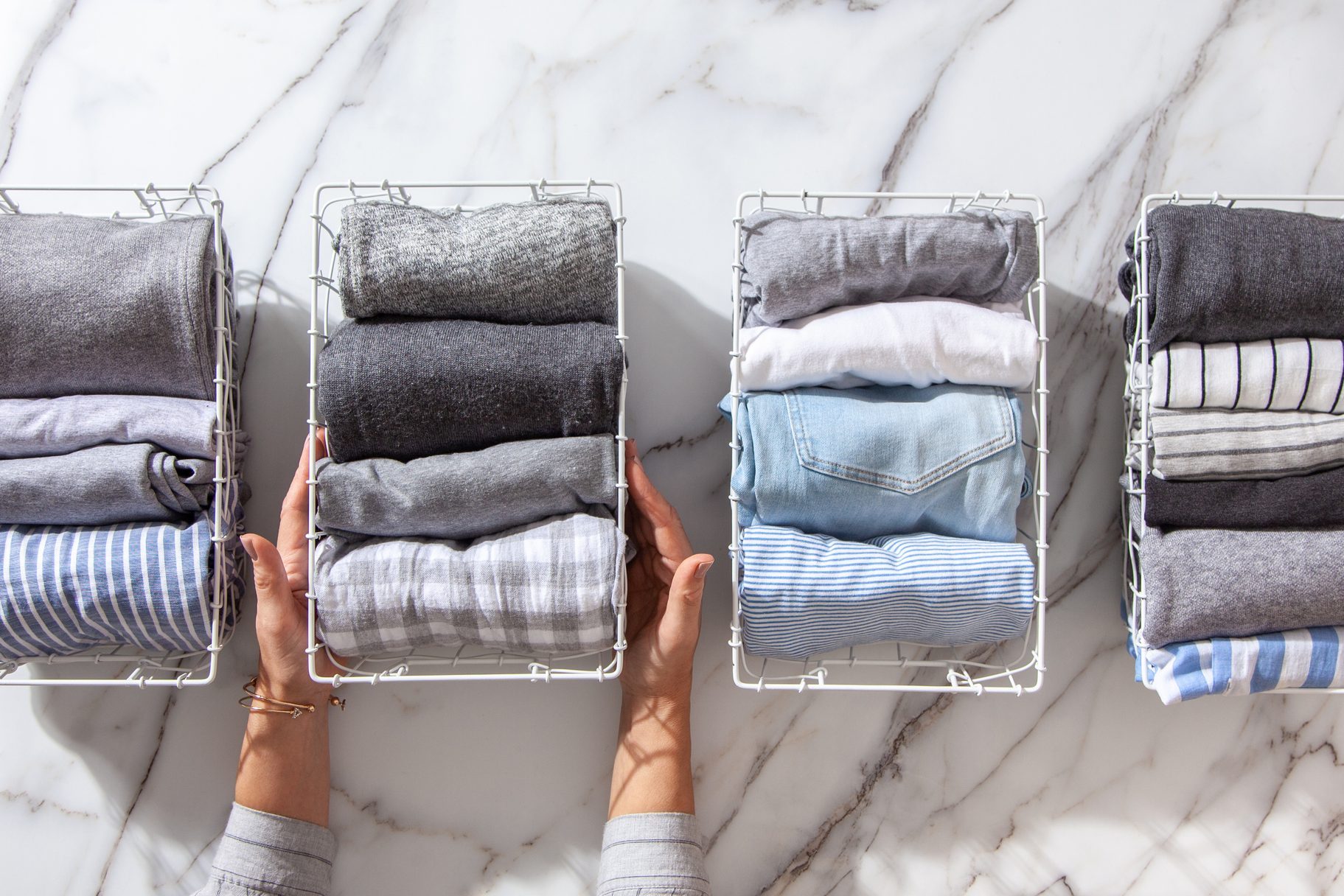
57 Home Organization Tips You’ll Wish You Knew All Along

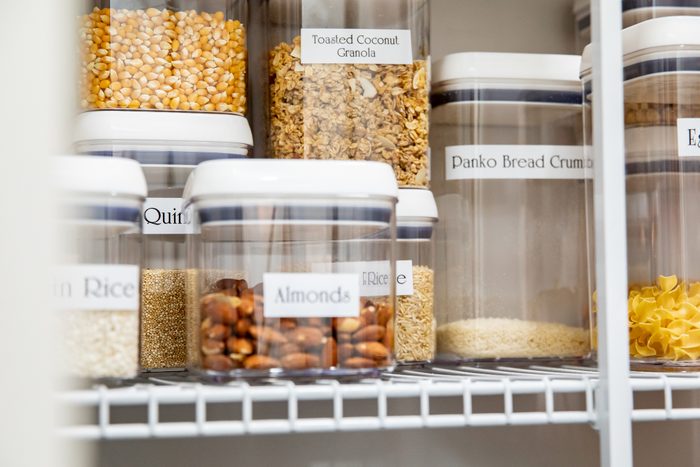
Invest in a label maker
It’s hard to remember exactly what’s in bins and storage containers, whether they’re in your attic, your closets or even your pantry. Sure, you may have put the stuff in there, but you’ll forget the specifics over time—and your family may not have ever known what was where in the first place!
“Consider labeling containers with attractive, easy-to-read labels,” says Olivia Parks, owner of Professional Organizer New Orleans. “This DIY closet organization tip streamlines locating items and ensures every family member can effortlessly contribute to maintaining an organized home.” Plus, a quick glance at it will let you know what’s missing.

Buy a cookware rack
Do you have a precariously teetering tower of pots and pans stacked in your kitchen cabinets? You can never find anything, and when you do, you run the risk of having everything come crashing down—literally. Thankfully, there’s a better way. I love an adjustable pots-and-pans organizer. Look for one that is roomy enough to accommodate pots and pans of all sizes, to ensure nothing gets scratched.

Contain container lids
Lids for food storage containers have a way of multiplying like gremlins in your kitchen drawers—and even though you have a bunch, you can never seem to find a match. Corralling them all into a divided organizer will prevent this problem, says Christina Del Famma, a personal assistant and professional organizer for Lifesquire. Choose one designed specifically for storing lids, which will keep those lids upright and easily accessible inside your cabinet or deep drawer. You seriously won’t know how you ever lived with your food storage tops in a big heap.

Use a move-it bin when organizing
It’s all too easy to get sidetracked from home organization, even while returning an item to its proper spot. After all, once you get there, you might get distracted or notice more problems in the next room. A “move-it bin” can solve that problem. “If you’re pulling things out while organizing and find an item that does not belong in that room, resist the urge to put it away immediately,” says Sarah Giller Nelson, owner of Less Is More Organizing Services. “Instead, put it in the ‘move elsewhere bin’ and keep going with your sort. Only when you are done organizing the space should you leave the room to put the collection of items away.”
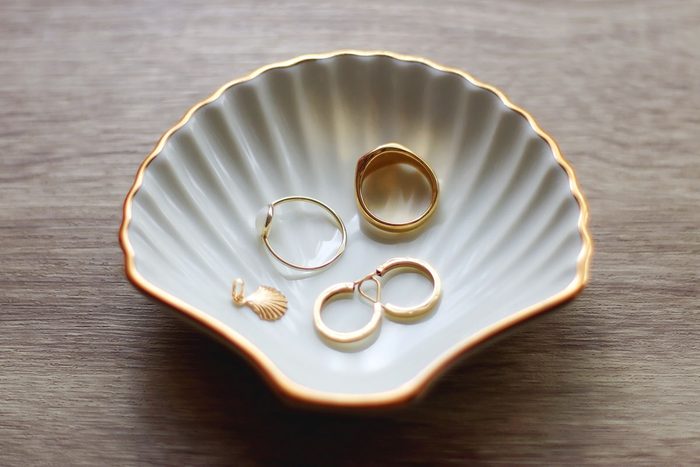
Try a trinket dish
Stop losing your jewelry with this tip from professional organizer Ellen Delap: “Place a small, decorative dish in your kitchen and bathroom for frequently worn jewelry that you take off at home. It keeps your jewelry safe and where you can find it.”

Arrange spices alphabetically
“Alphabetizing spices allows you to quickly find what your recipe calls for and makes putting them away just as fast,” says certified professional organizer Amy Trager. And there’s another surprising benefit to arranging your spices this way: You can figure out which ones are missing from your cabinet so you don’t encounter any unwelcome surprises in the middle of making a meal.

Stick spring dividers into drawers
“I am obsessed with spring-loaded drawer dividers,” Nelson says, noting that this is probably something only a professional organizer would say … though you might be saying it too, after you realize how handy they are. Drawer dividers create structure within a large, open space and corral odd-shaped items in the kitchen and throughout the house.
“I often use one to create a section in the Tupperware drawer for lids, and I use another to keep grilling utensils that are too long to fit into standard drawer organizers neat and tidy,” Nelson says. “It is remarkable how one vertical line creates a sense of order that is very satisfying.” Nelson’s trick for creating a custom, built-in look? “Buy them in the same color as the finish on the inside of your drawers.”
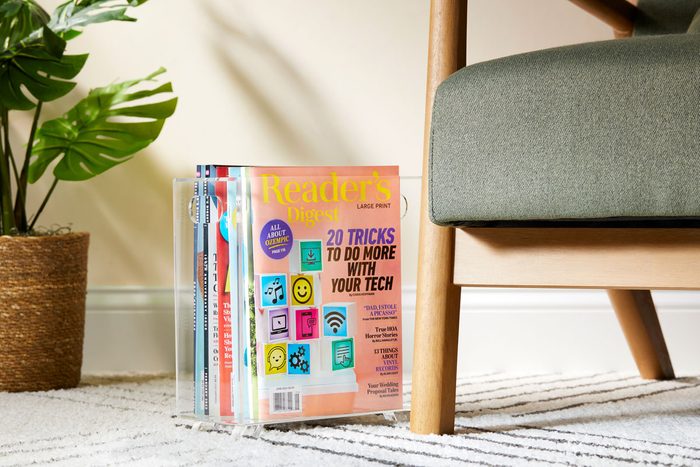
Style your to-be-read pile
We all get tons of catalogs and magazines, and it’s all too easy to leave them right on your kitchen counter. After all, you’re going to look at them soon, right? That is exactly how clutter starts. Delap suggests relocating this to-be-read pile from your kitchen counter to a stylish rack. Put everything in a narrow rack right where you do the rest of your reading. When it gets full, it’s time to purge.

Keep socks matched
A zippered mesh laundry bag is the answer to preventing mysteriously disappearing socks, according to Jennifer Truesdale of STR8N UP Professional Organizing Services. “Use a clothespin to clip a zippered mesh laundry bag to each person’s laundry hamper,” she advises, noting that the socks should go there instead of the main hamper. “When you’re ready to do a load of laundry, throw the bag in the wash, then transfer it to the dryer. You won’t ever have to sort socks or look for missing ones, because they stay together through the laundry cycle.” Choose a bag with anti-rust zippers and a zipper lock to prevent the bag from opening in the wash.
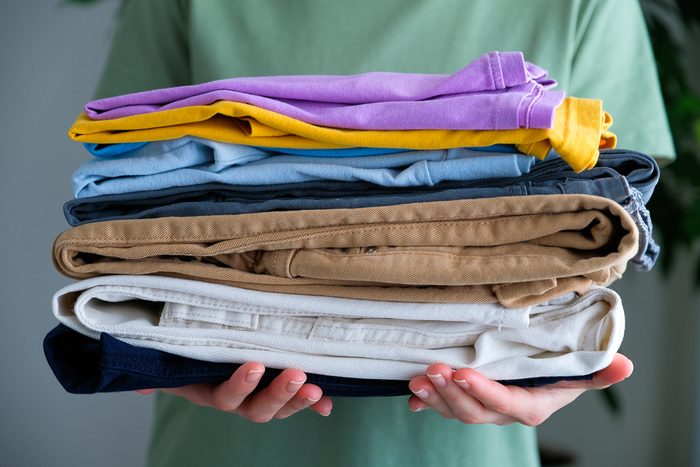
Use a folding template
Wish you could have perfectly folded piles of clothes like they do in stores? You can with this home organization tip from professional organizer Denise Clifford, author of The Decluttered Effect. “When folding my laundry, I usually keep out one item as a guide,” she says. “This way, I’m making sure that all my sweaters, for example, are being folded the same size and will fit nicely into my drawer or on my shelf without my having to refold anything.” There are actually folding boards you can buy to ensure the same fold every time.
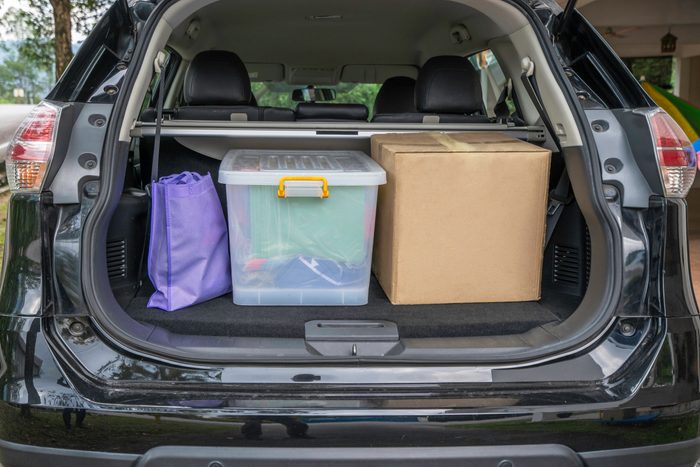
Add an organizer to your trunk
Your car is your home away from home, and as such, it can get just as messy—especially when you’re toting a lot of stuff (and people!). Ashley La Fond, founder of home organization company Of Space + Mind, has a car hack that will stop problems before they start: “Keep your car tidy with a trunk organizer for tote bags, kids’ toys and groceries.” A sturdy, collapsible organizer with compartments can be folded flat when not in use … though chances are, it will always be filled.

Downsize mementos by taking a photo
Keepsakes and treasures are lovely … until you start drowning in the clutter of the past. “If you’re keeping something purely for sentimental reasons, take a picture and then give the item away or throw it out,” suggests Sarah Krivel, owner of Kleriti Business Solutions. “After all, it’s usually the memory you cherish, not the actual item.” Create a slideshow of all your favorite mementos with a Wi-Fi-enabled digital photo frame. Take a walk down memory lane every time those memories pop up!

File receipts right away
Receipts are a headache. You cram them in your wallet, then forget about them. Or you put them all in a folder, only to be faced with a disorganized mess when you need to return an item or sort out expenses during tax season. Instead, “get a monthly divided sorter to keep receipts in for a year,” says Mary Jo Contello of Organized by MJ. “Then you always know where they are when needed for a return.” Look for an expandable accordion folder with slots for each category, so you can put your receipts in the correct spot right away.

Color code storage boxes
Color coding is key to keeping seasonal decorations organized, according to Lee Silber, author of Organizing from the Right Side of the Brain. The pro trick? Match holidays with the colors they’re associated with, so you know exactly what’s inside each storage container. Halloween decorations go in orange tubs, Hanukkah decor in blue bins, Christmas items in red ones and so on. “You don’t even need to be able to read a label to recognize what’s in there,” says Silber.
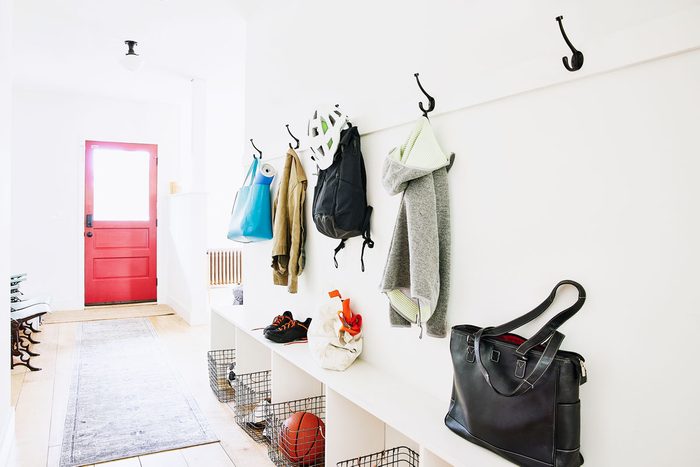
Designate a drop zone
“The last thing anyone wants to see when they come home after a long day is clutter piled near the front door,” says Dawn Falcone, founder of The Chaos Liberator. “Creating an entryway drop station will keep things off the floors because shoes, backpacks and other belongings will now have a dedicated storage space.” Your best bet will be a decorative multitasking structure that has a storage bench, shoe cabinet, shelves and hooks for coats, backpacks and even keys. Trust us—it’s a total game-changer!

Hang a wall-mounted jewelry organizer
It’s an unfortunate truth: If you don’t see it, you’ll often forget about it—no matter how much you loved it when you bought it. That’s doubly true when it comes to jewelry. But a wall-mounted jewelry organizer can change all that. “Store pieces where you will see them so you will use them,” suggests Delap. Find one with designated spots for necklaces, bracelets and even a basket for rings. Bonus: Depending on what you choose, it can be organization and decor all in one!

Delete digital clutter
“Digital clutter can be just as burdensome as physical clutter,” says Maura Thomas, author of Personal Productivity Secrets. A quick glance at your crowded, unorganized inbox or the tens of thousands of photos on your phone will corroborate that statement! To cut down on this, Thomas suggests a multi-tiered effort.
“Set up a secondary email account for things like newsletters and promotional mail,” she says. “Also, take five minutes every so often to clear out your pictures, text messages, music and other electronic files on a regular basis.” Finally, free up storage space by sending backups of your photos to the cloud, or downloading them to a smartphone storage saver.

Add fridge bins
It may seem like a little thing, but all those little moments you spend searching for ingredients to make a snack or meal add up. Fridge bins can save you a ton of time and energy. “Instead of grabbing each item off a different shelf, place them together,” says Emily Rosenthal, president of Masters of the Day and an expert in organization and leadership.
“For example, if you are making a smoothie, put all the ingredients in one designated area—ideally, a single container you simply grab from the fridge.” Choose clear, easy-to-wash plastic bins with helper handles, so when you’re ready to whip up your go-to, all you have to do is pull out the bin and start prepping.

Access deep shelves
Deep cabinets seem great—oh, the storage!—until you realize that your things tend to get lost behind one another. My solution? A roll-out under-sink organizer. Look for a freestanding one that requires no installation (especially key if you’re a renter who doesn’t want to put holes in the cabinets). Choosing one with dividers will ensure your items stay neat and organized. Roll one under the sink, in a cabinet or even in the refrigerator to totally transform those spaces.
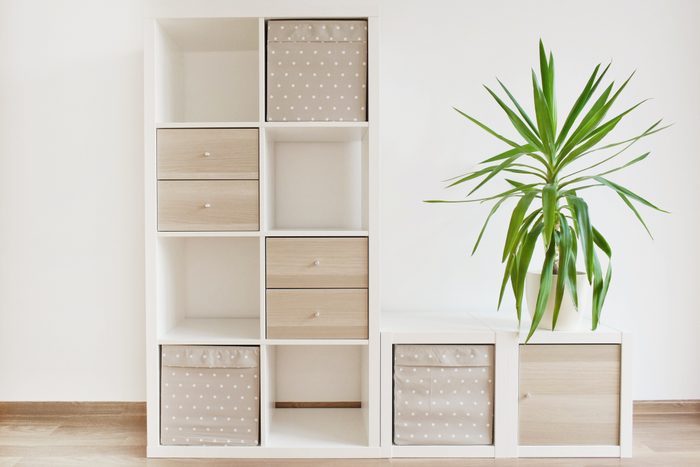
Ditch the dressers
Do you really need a dresser? According to Stacy Erickson Edwards, a Seattle-based professional organizer, the answer is … nope! “Swap traditional dressers for wooden cube organizers with bins,” she suggests. “This way, clothes don’t always have to be perfectly folded to close a drawer. Bonus: It will be easier for kids (and adults) to put clothes away.”
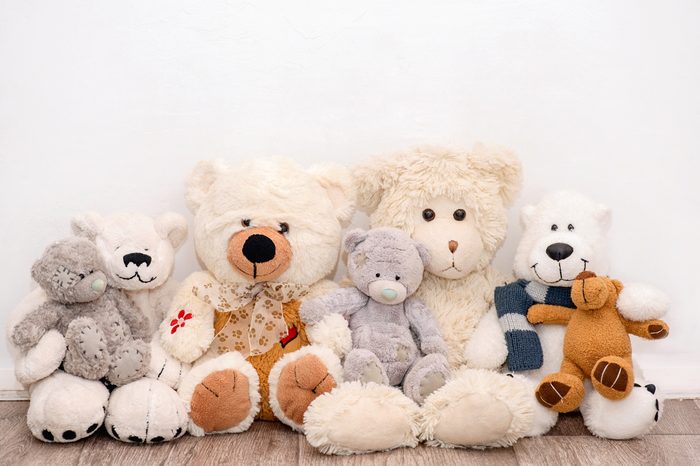
Scoop up stuffed animals
If the room is overrun with cute toys, it looks anything but cute. A stuffed animal hammock can change that in a flash. Hang a simple mesh net in a corner of a room a few feet down from the ceiling, or get a hammock that matches your decor. You might even be able to use sticky hooks—no installation necessary. Once your hammock is hung, use it as a guide to gauge how many things are in the room. If you fill it up, it’s time to stop buying new stuffies. That’s easier said than done, of course, so consider donating the extras.
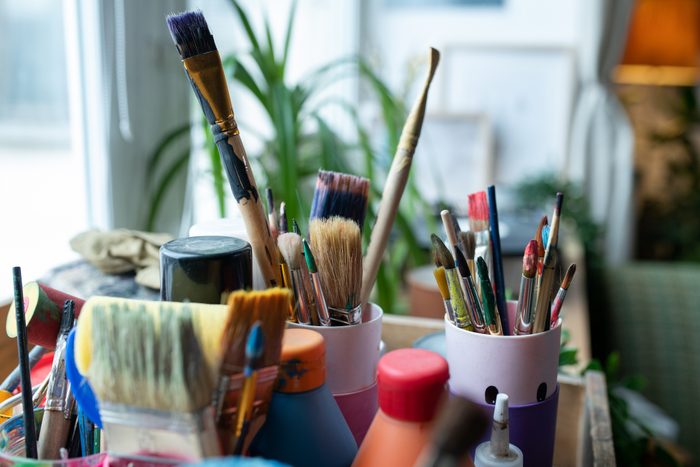
Roll away arts-and-crafts supplies
Stop stuffing arts-and-crafts supplies in drawers, where they can get lost and damaged. Instead, Delap says to contain them on a rolling cart. “A cart makes it easy to see your inventory,” she explains. “Plus, you can wheel it over to the work area, then roll it away.” For extra inspiration, choose a pretty one in a color that coordinates with the room it will mostly live in.
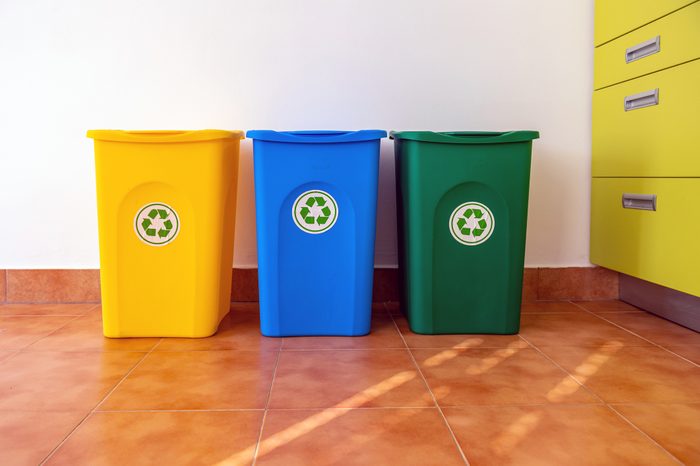
Add extra recycling bins
Stay on top of mail by taking care of unwanted papers right away, rather than letting them pile up. Krivel suggests putting recycling bins where they’ll be used—like the entryway, kitchen and office. Don’t worry: You don’t have to go with the industrial-looking blue ones. You can opt for a slim, sleek container or even a vintage-looking basket. No one has to know it’s a recycling bin except you!

Hang over-the-door storage
Vertical space is often untapped potential, and doors are nothing but vertical space! Maximize storage space by hanging shoe organizers on any door in your home. You don’t have to store shoes, so get creative: Store office or crafting supplies, pantry items, toys, video game controllers, accessories, beauty items and pretty much anything else that will fit in them. In fact, they work so well, you may want one in every room!
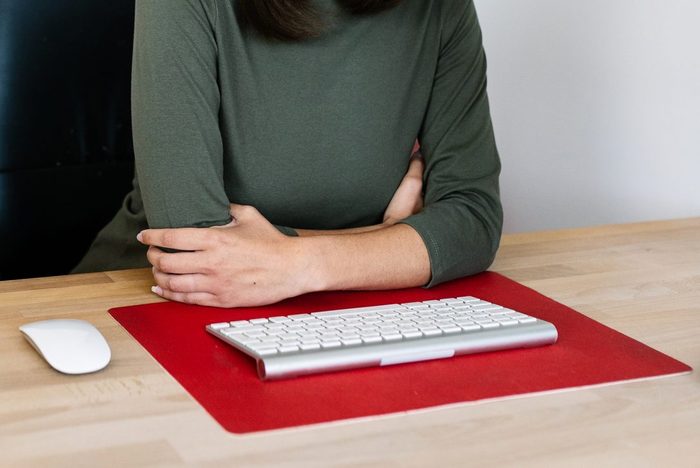
Carve out clutter-free space
Remember desk blotters? They may have gone out of fashion for their original purpose, but clutter coach Claire Tompkins suggests using one to mark off untouchable space on your desk. That way, even if you are still piling too much stuff on your work surface, you’ll at least have a piece of prime real estate where you can sit and work. Opt for a bright color to work as a visual cue that you’re not allowed to put anything on that particular spot.
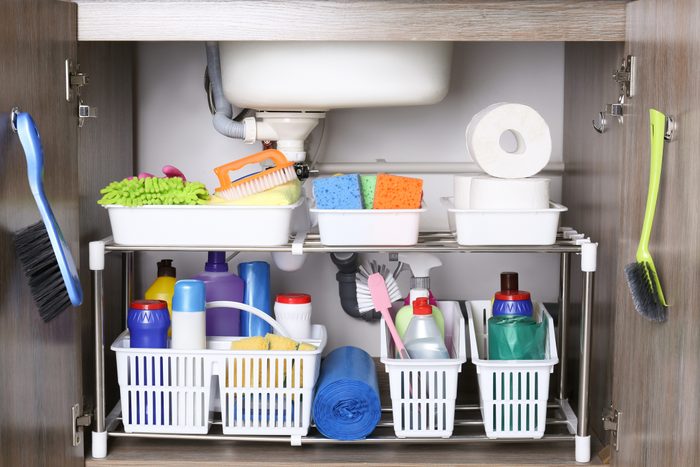
Add under-sink storage
To make the most of the storage space under the bathroom sink, try adding racks, bins and/or drawers. They add tons of space and create an easy-to-follow system. “Covered clear drawers are great for under-counter bathroom storage because you can easily see what’s inside, while keeping things contained,” says Truesdale. “They are also stackable and slender, so you can usually build a system around any pipe layouts that might be difficult to put larger bins around.”
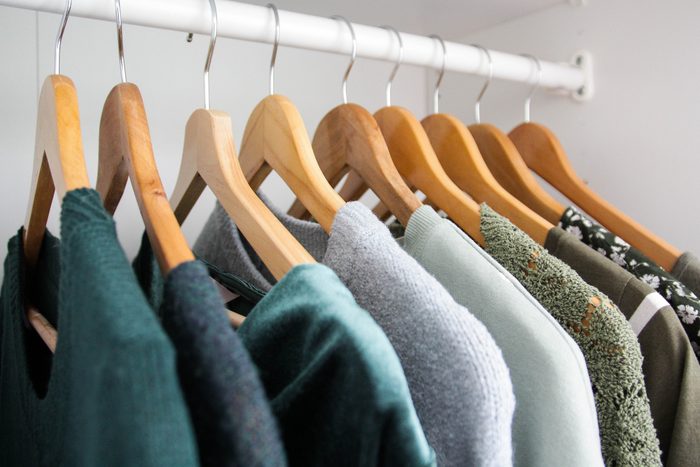
Corral clothes hangers
If not every hanger in your closet has an item of clothing hanging from it, get rid of it (at least temporarily). This little tip will go a long way toward streamlining your closet. “Store empty clothes hangers on a hanger organizer to use your hanging space only for clothes” suggests Delap, who says “hanger organizers keep your space tidy, and the hangers are easy to find when needed.”
Plus, when mixed in with clothing, empty hangers make the closet look messy, and they can catch on and damage clothes. Choose an organizer with easy-carry handles to tote empty hangers to the laundry room, where you can hang clothes before they wrinkle.
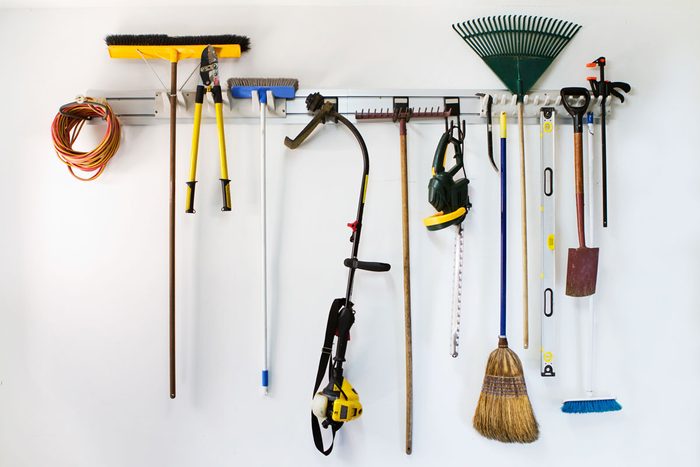
Display garage items
You’ll finally have space to park your car in the garage if you install a wall mount garage tool organizer. “They are my favorite way to get garage stuff out of the way and on display,” says Amy Bloomer, owner of Let Your Space Bloom, who also has a master’s degree in organizational psychology. They’re easy to install too. Just attach the racks to the wall, then hang bikes, tools, car-care items, garden supplies, lawn chairs and pretty much anything else.
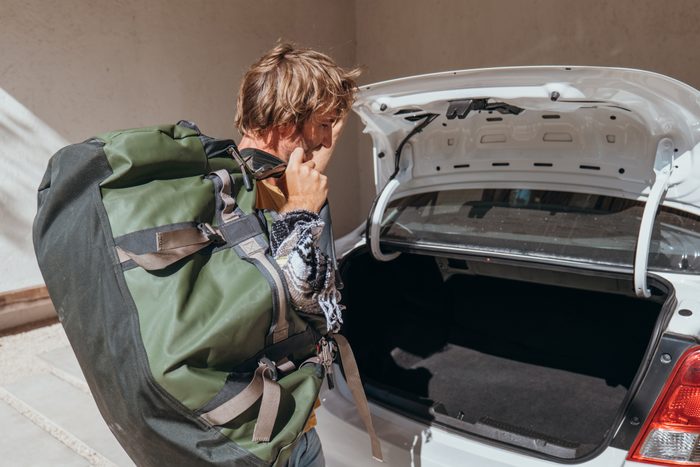
Clear the car
Here’s my tip for keeping your car tidy: Get in the habit of removing everything from the car that belongs elsewhere after each trip. Yep, every single one. That includes gym bags, work stuff, random papers, water bottles and, of course, trash. And speaking of trash, collect it in a waterproof bag or trash bin specially made for your car. Hang it on the back of a headrest, where it’s easy for everyone to reach—and easy to dump every time you fuel up the car.

Organize grocery bags
“Wrangle the avalanche of plastic grocery bags—the ones you currently store under the kitchen sink—into an organizer,” advises Nelson. When compressed, those bags will take up just a fraction of the space. No more plastic bags in your town? Do the same with your reusable bags. A sturdy, over-the-cabinet organizer will make use of wasted back-of-the-door space, and it’s the perfect place to tuck bags until you need them.
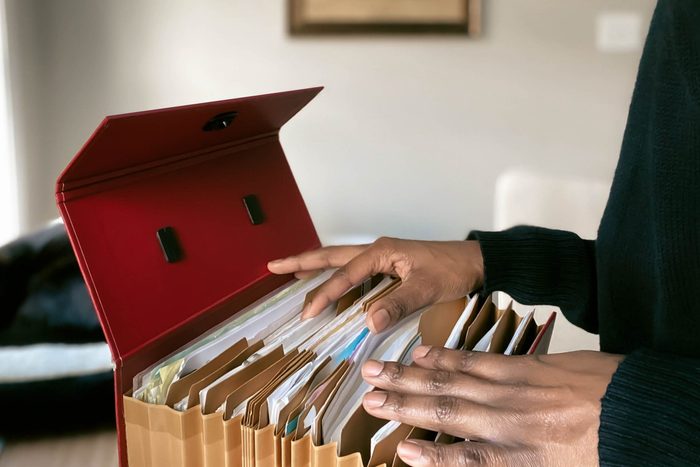
Take action with a file box
Turn those piles of paperwork on your kitchen counter or desk into a functional to-do list by organizing them in a small desktop file box. “These boxes can be maintained with a small number of hanging folders responding to the action required,” says Truesdale. “For example, bills to pay, things to read, things to respond to, coupons/gift cards to use and things to return.” Make sure to label sections with action verbs so you’re motivated to do the things you need to do. That visual cue will make all the difference.
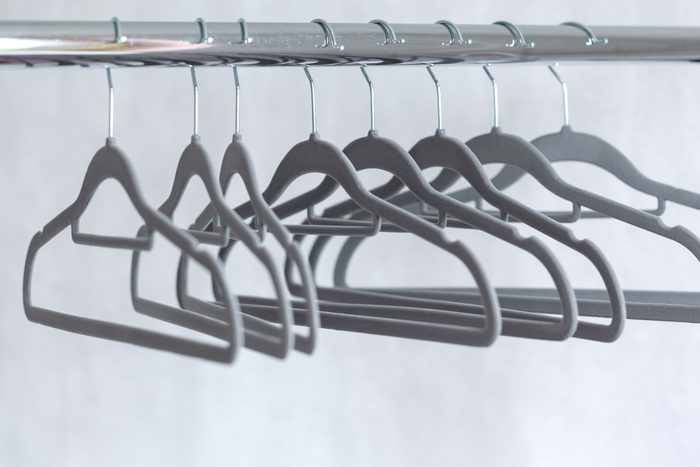
Swap out bulky hangers
A simple hanger swap can make a big difference in your closet. Instead of bulky plastic hangers, switch to velvet hangers, which pro organizers love because they take up a fraction of the space. Velvet grips your clothes better—no more slippery dresses and blouses sliding into a heap on the floor—and they look great. With space-saving hangers, you’ll instantly have a more uniform and polished space for a minimal investment.

Stash the small stuff in bags within your handbag
Does your purse or backpack feel like a black hole where you put things, only to never find them again? You can avoid this problem, says Delap, by using mini mesh zip bags to store all the little things. Designate separate bags for medicines, receipts, makeup and charging cords, using different colors for different categories. Bonus: They may be mini, but these bags can hold a surprising amount of stuff!

Wrap up the gift wrap
Gift wrap is awkwardly shaped and tricky to store, and it can be all too easy to lose tape, ribbons and bows—unless you have a special gift-wrap organizer, that is. Professional organizer Lisa Cantu, owner of An Organized Home OC, recommends getting a hanging gift wrap organizer, which you can hang right in a closet. She calls this solution “great for holding cards, ribbon, tape, gift wrap and more.” Look for one that is thin enough to fit in any closet and not take up too much space. You’ll never lose the tape again!
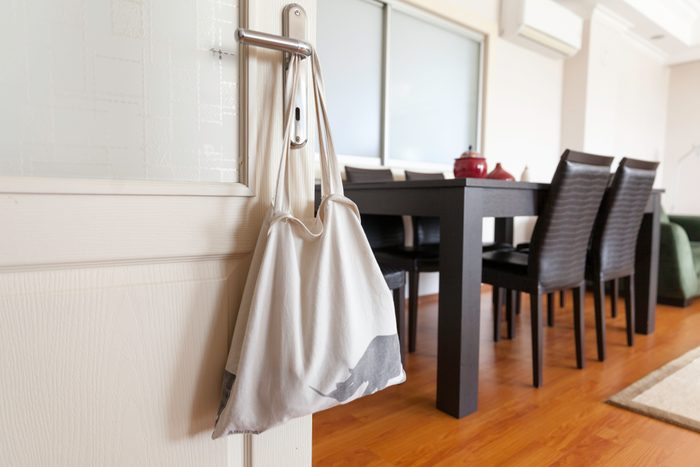
Keep a to-do bag right by the front door
Did you forget the dry-cleaning again? Or that item you meant to return? A to-do bag stationed right near your door (where you can’t miss it) can be stashed with stuff, then transported right to your car, says Rosenthal. Clip a note to the bag for items that need to stay refrigerated until you are ready to leave, and to keep your hands free, choose one with a comfy shoulder strap.

Dedicate a memory bin for each family member
We all have those things we can’t part with—and, quite honestly, shouldn’t. That said, we can certainly organize them. Get a bin for each family member and use it to collect sentimental items. “When you come across a keepsake, just add it to that person’s bin,” says Elsa Elbert, founder and CEO of Composed Living, a Los Angeles–based professional organizing company. “When the bin is full, you know it’s time to review the items and declutter if necessary.” You can also choose proper storage for more delicate items. Creating a home for these items gets them out of your day-to-day space while keeping them safely stored out of sight.

Use a shoe rack
The floor of the closet is not the ideal spot for shoes. You can’t see what you have, and it’s all too easy to toss them in there when you’re trying to clean up in a hurry. Instead, try a tiered shoe rack so you can see and easily reach your shoes. I also like to align shoes toe to heel, so you can fit more shoes on each shelf. Choose racks that are sturdy and easy to wipe clean, and place a welcome mat under the rack to catch any falling debris.
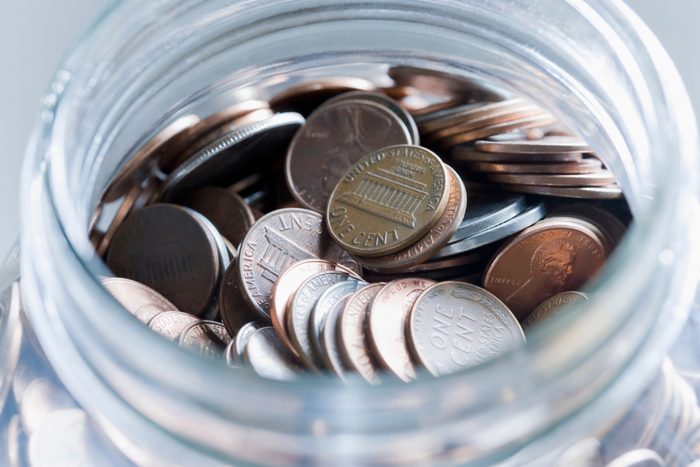
Don’t lose items left in pockets
Why can’t family members empty their pockets before throwing their clothes in the hamper? It may be the eternal mystery of life, but at least now you’ll have an easy place to put all that random stuff. “Keep a clear jar in your laundry room for holding items found in pockets like coins, receipts or lipstick instead of leaving them loose on top of your washer, where they can get lost,” says Nina Ward, professional organizer and interior designer. Opt for a clear plastic jar so you can see what’s in there and when it’s getting full—and because it won’t shatter if it drops.
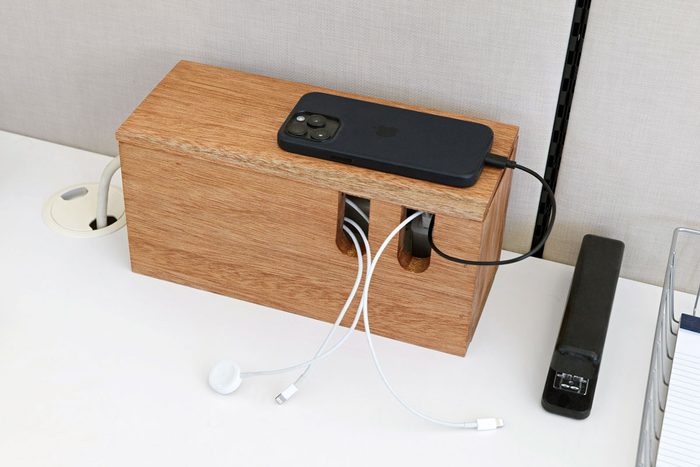
Tie up charging cords
All those cables and cords—yes, you need them, but they’re so unpleasant to look at! Get rid of visual clutter with a cable management organizer. No matter what kind of cord you have, or how many, they make an organizer for it. Stop looking at those tangled messes of adapters, chargers and cords. You can even hide power strips!
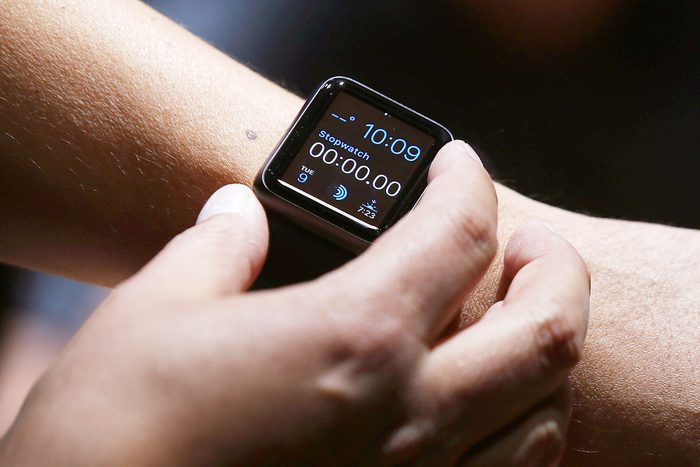
Time yourself when organizing
To avoid getting overwhelmed with home organization, especially when you’re just starting out, try setting a timer for 30 minutes, suggests professional organizer Felice Cohen, author of 90 Lessons for Living Large in 90 Square Feet (or More). When the buzzer goes off, you can stop. Seeing progress is motivating, and you’ll probably surprise yourself with how much you get done in a short period of time. You also won’t mind doing it again, since it doesn’t derail your day.
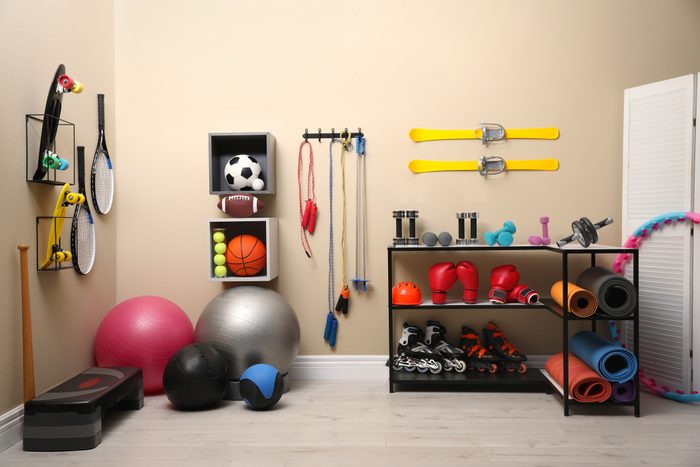
Stow the sports equipment
Between the balls, bats, racquets, clubs and helmets, the garage can get messy—fast. I suggest getting a heavy-duty sports rack to keep gear organized and garage floors clear. Opt for one with a ball basket, a deep compartment for bats and lacrosse sticks, and upper storage, to ensure everything has a spot. Don’t forget to get everyone in your household on board, so they know where their items go when they get back from practice and games.
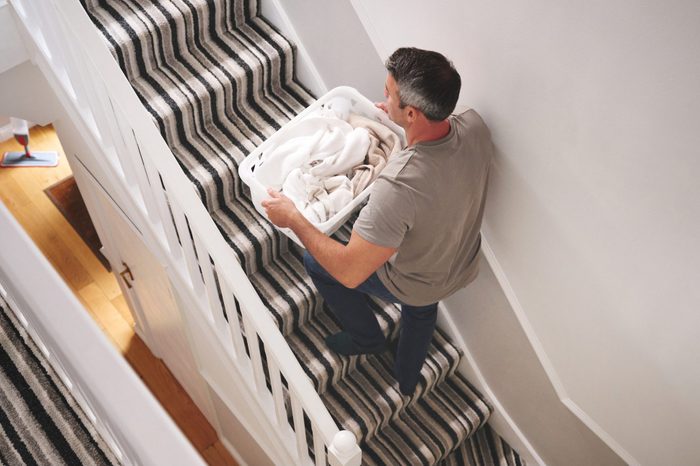
Keep a “going up” basket by the stairs
You know all those items from your second floor that get scattered throughout your house and left there seemingly forever? Clifford keeps an empty basket at the bottom of the stairs to corral those random things. At the end of the day, right before bedtime, she takes the basket upstairs with her and puts everything away in its proper spot. That makes for a much better day tomorrow—and every day after!
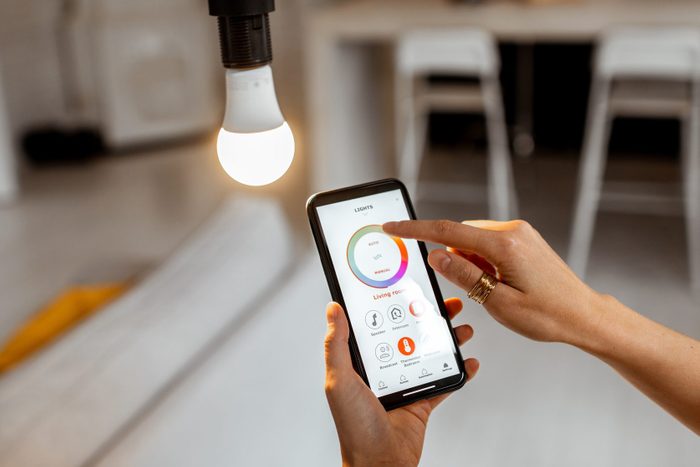
Light up your life
Unless you carry a flashlight with you, seeing what is stored in the back of a deep shelf, under the sink or on the floor of a closet can be difficult. Well, battery-operated, motion-activated, bright LED closet lighting will be your savior. No need to hire an electrician: These super-bright lights stick on most surfaces. And the real benefit? When you can see your space, you can keep it tidy, making finding what you’re looking for a whole lot easier.

Display your family’s to-do lists
Get your family in (organizational) shape by creating a family command center using self-sticking white-board decals. They’re just like dry-erase boards, only better, because they don’t require nails—so they won’t damage your walls. Stick one to the inside of your kitchen cabinet or in the mud room, where you can’t lose it and everyone will see it. Truesdale says it’s great for keeping track of schedules, meal planning and even your organizing and cleaning to-do lists.

Hang the cleaning tools
Don’t forget: Your cleaning tools can also get messy! I like to keep them tidy and ready to grab in a wall-mounted organizer. Look for one with multiple spring-loaded grabbers (to keep brooms and mops upright and hanging by their handle), as well as hooks to hang your dust pan and cleaning towels.

Decant pet food
No more torn-open bags messing up your pantry! Instead, pour pet food into a rolling container for the ultimate in home organization. The scoop makes it easy to dish out, and your pantry will stay organized. Large bins can hold up to 50 pounds of dog food, just remember to get something with an airtight snap latch to keep out moisture, humidity and pests.

Add a shelf
Need more shelf space for shoes, jeans or folded sweaters? Skip the contractor and add tension rod shelves instead, says Cantu. And closet organizers aren’t just for clothes: You can slide a telescoping shelf wherever you need storage space, like in the pantry for cereal, in the hall closet for board games, over the toilet for towels or above the washing machine for supplies. Adjustable shelves are so versatile, you’ll find ingenious uses for them all over your home.
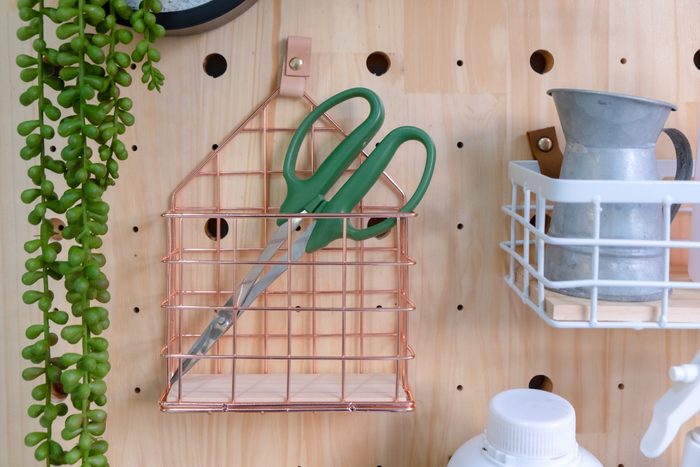
Hang pegboards
Get back to basics with this handy home organization trick. Pegboards are super old-school, but they’ve stuck around for a reason: They work. Hang a pegboard above your desk, in the kitchen or (of course) the garage to keep clutter down. They’re versatile, too: Incorporate bins, trays, hooks and containers to store tools, pens, tape, scissors and more. Plus, a pegboard will keep your essentials close at hand while giving you more surface area to work on.
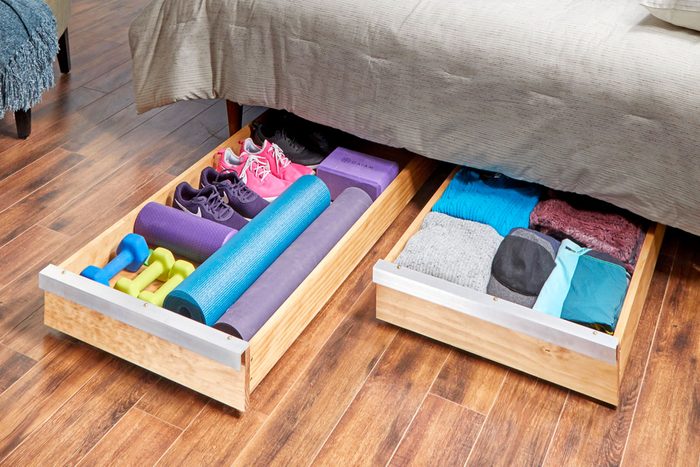
Utilize unused space under the bed
Make use of the wasted storage space under your bed—and prioritize the things you need. Store out-of-season items in shallow containers, and slide them under. Voila! You’re done. But one note: Think beyond just swapping out clothing. Rotate all your seasonal items, including shoes, accessories, bed linens, decor, throw pillows and blankets, so they’re out of the way when you don’t need them, and in great shape when you do.
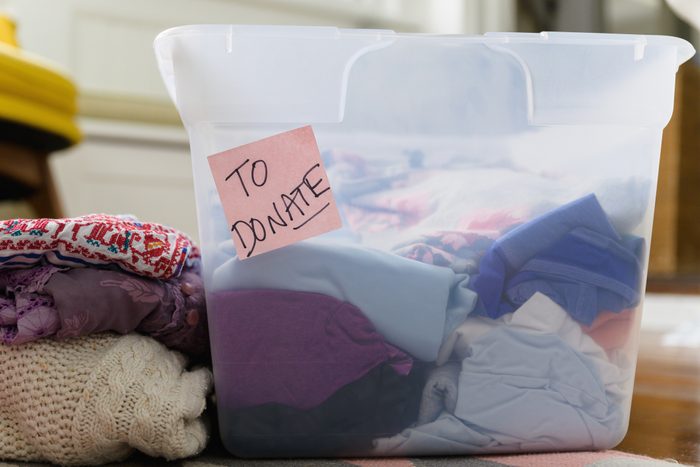
Set up bye-bye bins
Warning: “It isn’t enough to pull out all the stuff you don’t need,” says professional organizer Evan Zislis, author of ClutterFree Revolution. “You need to purge it from your home by trashing it, recycling it, thrifting it or consigning it.” Set up bins lined with heavy-duty bags for items you are donating, consigning or sharing through a local Buy Nothing group. Those bags are key, because when the bin is full, you simply take it out and remove it from your home.
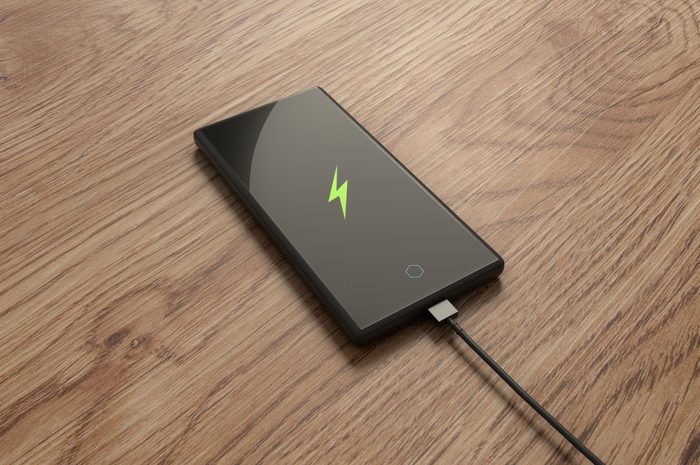
Plug in a charging dock
Whether you live solo or with a large family, charging devices can seem to take over your house (especially in the latter situation). That’s why it’s a smart idea to find one place to plug in and charge all small electronics like cell phones, laptops, iPads and earbuds. You’ll just need a multi-port, high-speed charging station to power up your entire household. And here’s a bonus pro tip from Falcone: “If your charging center can be placed in your entryway, this will prevent you from leaving the house without one of your gadgets.”
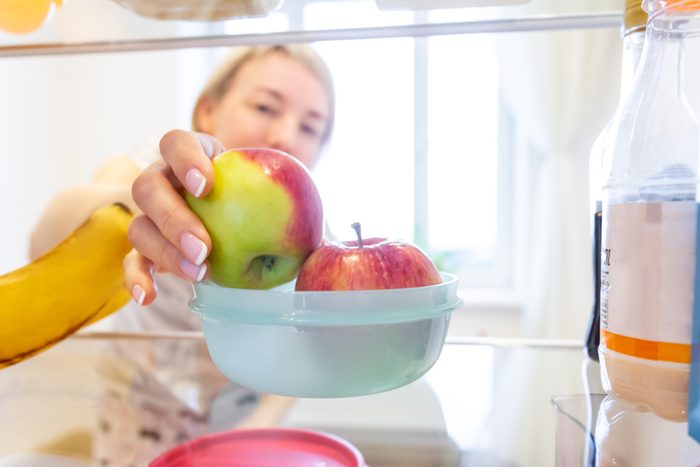
Designate an “eat me first” section in the fridge
We know—you have the best intentions when you stock up on fresh food at the grocery store or pack up those leftovers. But they can get forgotten in the craziness of the week and buried in the fridge, and by the time you look at them again, they’re past their prime. One simple trick will prevent this: Buy a clear container with a well-fitting lid so you can see what’s inside, and always store it in the same spot in the fridge. You’ll basically be training yourself to go to this spot first.
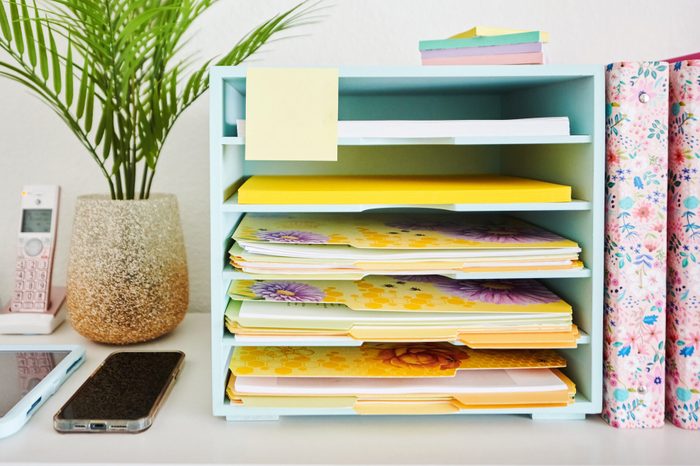
Make filing fun
“For long-term results, make filing fun and pretty,” says Zislis. “This will give you the inspiration you’ll need to maintain your newly organized systems.” No drab legal folders here—try florals or any graphic design that is more your style.

Divide shelves
These are the vertical equivalent to drawer dividers. Shelf dividers separate one shelf into multiple, more functional compartments. Keep tall piles of magazines or files from tipping over, and prop up skinny items like handbags. Shop for acrylic dividers with hooks on the bottom that latch onto shelves; there’s no need for screws or even adhesive.

Store seasonal clothing in a way that allows you to see it
Getting off-season items out of your closet feels great—until you have to go searching for something you need. Think: vacations, transition seasons and even pulling out everything again next year. That’s why I always use storage boxes with zip-down window panels. I can see what’s inside and retrieve things without un-stacking them. In addition to being perfect for clothing storage, canvas zip-closed boxes are also great for guest linens and seasonal throws. Be sure to choose a style that collapses so they can be stored flat when not in use.
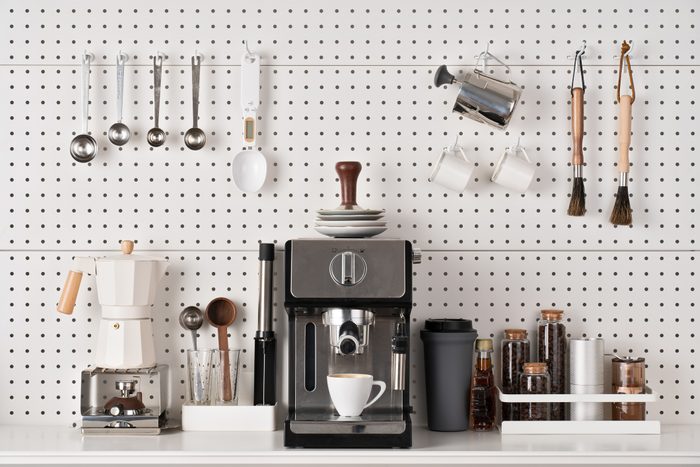
Set up a coffee bar
For a quick kitchen reorg and a little bit of morning magic, create an at-home coffee bar. Take coffee pods and tea bags out of their boxes and store them in stackable organizers so they not only look neater but are also a whole lot easier to access. Choose a clear stacking system that has one container divided for tea bags, and a second box with space for coffee pods.

Add a turntable
Lazy Susans aren’t just for the kitchen. Also, they aren’t lazy at all—they’re total home organization workhorses that you can use in nearly any space, including the bathroom. “This is the ideal way to keep bathroom products together for easy access every morning while your countertop stays organized,” says Delap. You can also try this in your home office and even in your den for your collection of remote controls.
Now that you’re fully organized, keep your home in tip-top shape with these cleaning tips for every room.
Additional reporting by Charlotte Hilton Andersen.
About the experts
|
Why trust us
At Reader’s Digest, we’re committed to producing high-quality content by writers with expertise and experience in their field in consultation with relevant, qualified experts. We rely on reputable primary sources, including government and professional organizations and academic institutions as well as our writers’ personal experiences where appropriate. We verify all facts and data, back them with credible sourcing and revisit them over time to ensure they remain accurate and up to date. Read more about our team, our contributors and our editorial policies.
Sources:
- Olivia Parks, owner of Professional Organizer New Orleans; interviewed, 2023
- Christina Del Famma, personal assistant and professional organizer for LifeSquire; interviewed, 2023
- Sarah Giller Nelson, Miami-based professional organizer and founder of Less Is More Organizing Services; interviewed, 2023
- Ellen Delap, Houston-based professional organizer; interviewed, 2023
- Amy Trager, professional organizer in Chicago; interviewed, 2023
- Jennifer Truesdale, professional organizer and founder of STR8N UP Professional Organizing Services in Charleston, South Carolina; interviewed, 2023
- Denise Clifford, professional organizer and author of The DeeCluttered Effect; interviewed, 2023
- Ashley La Fond, founder of the home organization company Of Space + Mind; interviewed, 2023
- Sarah Krivel, owner of Kleriti Business Solutions; interviewed, 2023
- Mary Jo Contello, Houston-based professional organizer and founder of Organized by MJ; interviewed, 2023
- Lee Silber, author of Organizing from the Right Side of the Brain; interviewed, 2023
- Dawn Falcone, founder of The Chaos Liberator; interviewed, 2023
- Maura Thomas, author of Personal Productivity Secrets; interviewed, 2023
- Emily Rosenthal, president of Masters of the Day and expert in organization and leadership; interviewed, 2023
- Stacy Erickson Edwards, professional organizer in Seattle; interviewed, 2023
- Amy Bloomer, Baltimore-based professional organizer and owner of Let Your Space Bloom; interviewed, 2023
- Lisa Cantu, professional organizer and owner of An Organized Home OC; interviewed, 2023
- Elsa Elbert, founder and CEO of Composed Living, a Los Angeles–based professional organizing company; interviewed, 2023
- Nina Ward, professional organizer and interior designer in Covington, Louisiana; interviewed, 2023
- Felice Cohen, author of 90 Lessons for Living Large in 90 Square Feet (or More); interviewed, 2023
- Evan Zislis, author of ClutterFree Revolution; interviewed, 2023




















